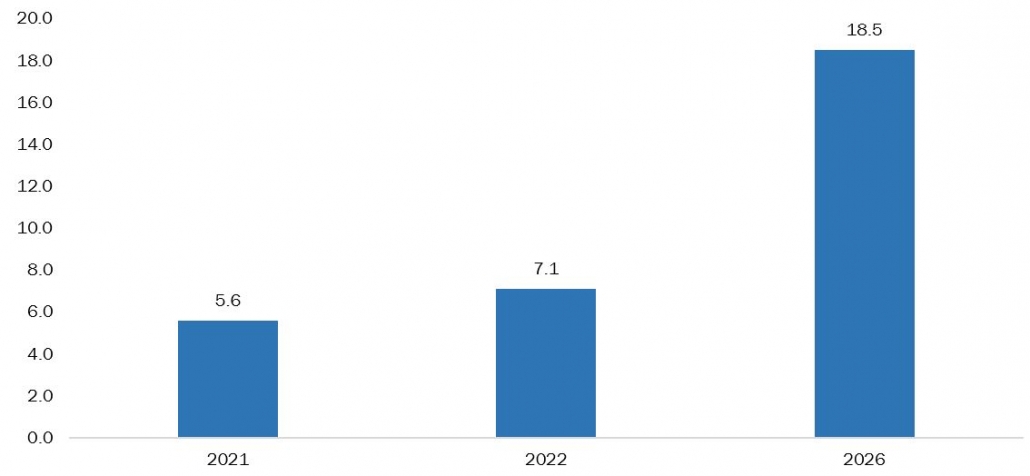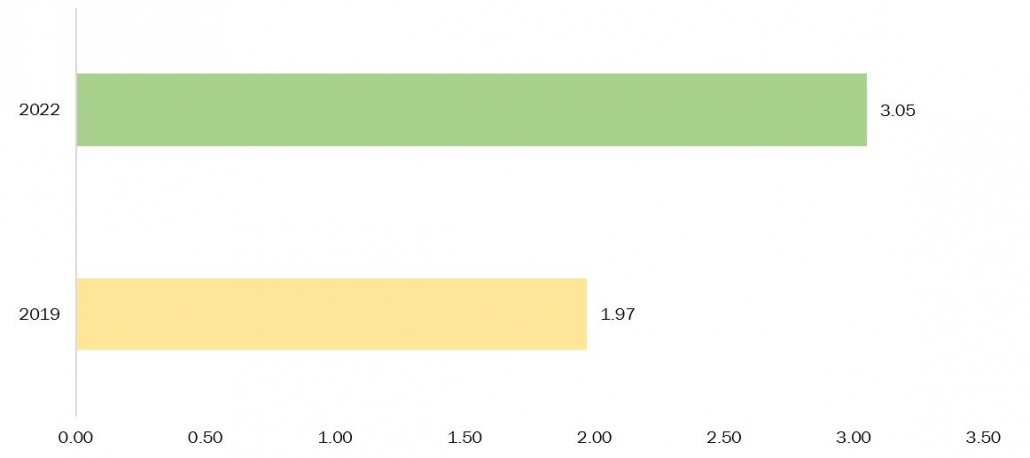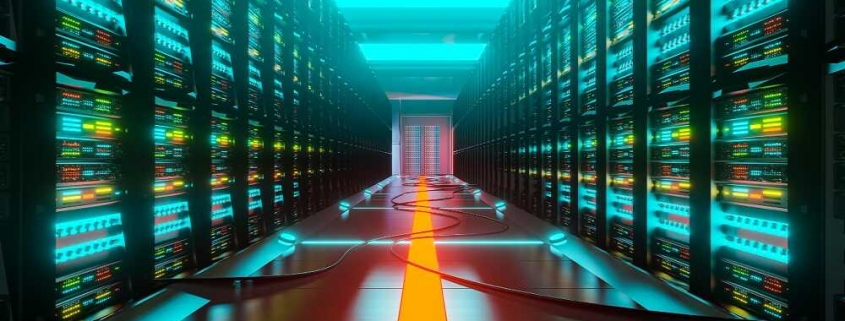Beyond Limits: How Supercomputers are Transforming Science and Technology
Supercomputers are a type of mechanical device that can be used in a wide range of real-life applications to solve complex problems that may take a huge time to solve by a normal device in very little time. These supercomputers consist of several CPUs or central processing units coupled with high-specification microprocessors that significantly improve the overall power and performance of these supercomputers to handle large quantities of data and solve complex problems quickly. These supercomputers are interconnected with a huge amount of other similar nodes that keep them updated about new data that has been added and if there are any changes in the current data stored at multiple nodes simultaneously.
These supercomputers were first created in the year 1960 by US scientists and researchers and this project was heavily funded by the US government. The main role of these supercomputers was to enhance the US military power using the benefits of these supercomputers. These supercomputers were used for running complex simulations and real-time problems faced by the military to enhance their weapons and strategy which can further improve their overall power and dominance.
There are other wide range of applications too in recent times for supercomputers such as the data-driven enterprises that need huge amounts of data to be handled across the globe and need advanced decision-making using that data to improve the business done by the use of these supercomputers. Also, some industries such as BFSI or defense need high computing power to enhance the efficiency and smooth functioning of these organizations.
Global Production Trends
The production of supercomputers has been steadily increasing over the years and the industry has been booming in recent times with its applications increasing in demand. For instance, factors such as rapid growth in data-driven industries such as Instagram and Facebook need a supercomputer to handle the large quantities of user data and make quick decisions based on evaluating that data daily. Also, the handling of large amounts of data that these enterprises rely on significantly not only requires high processing powers using multiple GPUs or CPUs but also, they need high-speed internet connectivity to efficiently communicate and handle the data accordingly. These factors have significantly contributed to growing supercomputer production globally.
In recent years, there has been a notable increase in the production of supercomputers in emerging economies that has increased urbanization in several countries across the globe coupled with technological advancements in cloud computing technology that require supercomputers with high speed and computing power to handle the large volume of data stored in cloud servers effectively.
These supercomputers have a diverse set of applications in end-user industries from military & defense to space and rocket research centers and can cater to all their needs according to their technology, for instance, the supercomputers used in space or rocket research centers like NASA or National Aeronautics and Space Administration these days comes with a wide variety of features according to the needs of the researcher. They use these supercomputers to conduct deep and thorough research on the different planets they send rockets and spaceships to analyze different resources and environmental conditions. Also, they build rockets in these organizations which is a very complex process, and need to run complex simulations on these supercomputers before the launch of these rockets to avoid any failures at the time of the actual launch.
The use of these supercomputers requires high-speed internet connectivity and with the significant growth made in the field of 5G technology in recent times which has significantly improved the bandwidth and speed of the internet globally has influenced the production of supercomputers.
Supercomputers use case
The use of supercomputers in different industry verticals is a huge trend in the market these days as different industries are switching over to more efficient options for smooth functioning and creating powerful and fast processing computers for enterprises to handle large amounts of data while making quick complex decisions using these high-power supercomputers for different industry verticals and making the day-to-day operation of these enterprises easy to operate and function smoothly.
These supercomputers are widely used in different industry verticals including several industries that are heavily data-driven and rely on deep analysis of the data using the supercomputers to gain useful insights. The weather forecast and climate predictions are one such example for these data-driven industries that use the supercomputers. These weather forecasters use these supercomputers to run complex weather condition simulations of different regions to recognize patterns and based on that data they predict long-term weather forecasts and reports.
Some other use cases for supercomputers include the use of them in different research centers like for educational and innovation purposes. These research centers include the theoretical physics research centers which use these supercomputers to run complex mathematical problems and equations to prove different theories that can innovate the future of physics and technology.
The use of these supercomputers is prominent in the field of aerodynamics which is used in a wide range of applications such as normal automobiles, race cars from Formula 1, airplanes, and others to run the simulations of these aerodynamic features that will be integrated into these mechanical devices which will further ensure the smooth and efficient working of these devices in the long-run. These aerodynamic features have very complex mathematical problems which are easily solved using these supercomputers.
Furthermore, the recent growth in the field of Artificial Intelligence has made a significant impact on the use of these supercomputers in the Artificial intelligence industry. The need for supercomputers for a wide range of artificial intelligence applications has significantly increased in recent times as they need high-speed and high-power computers to run complex problems and store large amounts of data for deep learning.
The growth in data has further led to the adoption of cloud technologies by these large enterprises that need supercomputers to manage and handle these large amounts of data efficiently. Thus, the growth in the adoption of cloud computing with growth in data will increase the use-case and demand for these supercomputers in the market. For instance, the estimated growth trajectory of public cloud end-user spending in India is expected to go from $5.6 billion in 2021 to $18.5 billion in 2026. This will significantly increase the demand for supercomputers.
Figure 1: Estimated Growth of Public Cloud End-user Spending in India, From 2021-26 (In Billion Dollars)

Source: ibef.org
Market Dynamics and Drivers
Several factors drive the supercomputer market, including a rise in applications for them across different industrial applications like artificial intelligence and theoretical physics research with complex mathematical problems in recent times coupled with the rise in demand for automobiles that use aerodynamic technologies to manufacture efficient vehicles in the industry. These automobile manufacturers use these supercomputers to run simulations of these aerodynamic features into the vehicle to check their efficiency and reliability over the years the vehicle will run on the roads.
The need for these supercomputers has seen a significant rise with the adoption of data-driven technologies like cloud computing by several enterprises that use these supercomputers to handle and manage huge volumes of data effectively in large enterprises. Thus, these factors are anticipated to propel growth in the supercomputer market over the forecast period.
The development and innovation in defense and security of different countries have made several governments across the globe heavily invest in supercomputers to enhance the overall cybersecurity of government useful data and military use cases for enhancing defense strategies and weapons using new and innovative supercomputers across the globe. This is one of the growth factors in the supercomputers market and the use of innovative supercomputers in the cybersecurity and defense industry is significantly impacting the demand for supercomputers in the market globally.
For instance, the expected growth of the Indian cybersecurity market is from $1.97 billion in the year 2019 to $3.05 billion in the year 2022. This growth in the cybersecurity market is expected to heavily influence the demand for supercomputers in the market.
Figure 2: Expected Growth in the Indian Cybersecurity Market, From the Year 2019-22 (In Billions of US Dollars)

Source: trade.gov
Key Developments
- In March 2024, Denmark collaborated with the leading technological company NVIDIA to build a national center for AI innovation that will have one of the world’s most powerful supercomputers for AI.
- In March 2024, NVIDIA announced the launch of their latest and innovative AI supercomputer called NVIDIA DGX SuperPOD, it is powered by NVIDIA GB200 Grace Blackwell AI Superchips to enhance its ability and power.
In conclusion, the supercomputer market presents significant opportunities for growth and innovation, driven by the increasing popularity of artificial intelligence around the globe. While facing challenges such as fluctuation in material costs that negatively affect various industry verticals and huge investments in research and development for new and innovative supercomputer solutions, the industry is poised to capitalize on technological advancements and innovations to meet the needs of a growing global demand for supercomputers.



